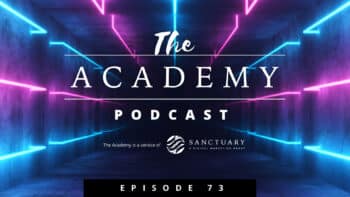
If you haven’t learned that your punctuation and grammar guides are your friends and that picking up a good book on how to write better, more personable and interesting copy is a good idea, then it’s time to get intimate and cozy with this advice: quality copywriting is critcal to successful SEO. If you want a successful blog, website or SEO campaign you need to improve your writing–or die trying.
Continuing our discussion of copywriting, let’s look at some of the tried and true rules of writing for SEO. I’ll also try to reinforce some of the new rules of SEO copywriting 3.0 and the future.
1. Know your words and where they live
As we’ve discussed previously, there is one rule of effective SEO that you must follow: research your keywords before you start an SEO campaign. The specific combinations are critical.
In addition to knowing which keywords are important, you need to know where to place them on the page.
Keywords should be prominently placed within the title of your page and within the H1 tag. If you’re a blogger, this is usually accomplished automatically for you. This placement of your keywords shows the search engines that this is the subject of your page.
Plus, part of copywriting for SEO is about creating compelling content that generates links. If the title of your page contains important keywords and it’s compelling and interesting, it will make others want to link back to you.
Use variations of your core phrases within your subheadings. These are the H2 and H3 tags that show importance but slightly less than your main page title.
Lastly, using your keywords in a compelling way will encourage people to use that text when linking to you; a very important part of the SEO process. A link back to your content is good. A link back that has your key phrase in the link text is highly valuable.
2. Let your keywords welcome your readers
Start off the first sentence of your content with your top keywords. This will reinforce the subject of your page and help the search engines to learn what your page is about.
Search engines will also use the first part of your content in the results underneath the link. So try to summarize your page in a compelling way when you’re writing this very important introduction.
3. Know when to be “strong” and when to be “standard”
When appropriate, you should try to “bold” your keywords in your content with the “strong” tag. Don’t overdo it because the contrast between regular text and bold text can be distracting if you do it too frequently.
Bolding your most important keywords further places emphasis on the keywords and reinforces the subject of the page. This will be effective if you use this technique on your most important keys.
4. Link within the family
Whenever possible, try to link to other content on your site and from within your pages. This will improve your reader’s experience and make your content more valuable by extending the experience of your subject.
Linking within your content also reinforces the subject of your page when the search spiders see that links out to additional content are related to your page subject.
Make sure to use your keywords as the link text as well. Never link out to content with the words “click here”. This does nothing to reinforce your relevancy compared to the users search inquiry.
5. Link out to friends
You must also realize that search engines now prefer links that appear within content because–to be honest–these are the hardest types of links to acquire.
Linking out to friends and useful information will improve the users experience but more importantly it will let others know that you appreciate what they’re doing. The goal being that they’ll also visit your site and return the favor of linking back.
Linking out to related sites and content is becoming an important part of SEO as it further reinforces content–but more importantly–it begins the process of building relationships and friendships that are becoming more and more critical to successful SEO.
6. Focus on readability
As mentioned in item #3, you don’t want to do anything that reduces the readability of your content. Mixing bold and standard weight fonts for example is hard for the mind’s eye to scan and it’s distracting. Multi-colored text will accomplish the same substandard result.
When you’re writing, use your keywords but focus on the real humans that will ultimately read your content. Write naturally because your first goal is to provide high quality, highly useful content. It used to be a popular practice to work your keywords into your content as frequently as possible – even at the peril of your readability. The focus now is to work your keywords into your content naturally because your goal is to gain readership and attract links. If you can do this you’ll have a successful SEO campaign as well.
7. Get creative
As you’re writing your content, ask yourself if you sentences read naturally. If not, then you need to get creative. Instead of ending a sentence and then starting a new one with the same key phrase, try to break up the keywords in a creative way.
For example, a sentence about the 10 golden rules of seo copywriting could end with “…let’s continue our discussion about the 10 golden rules.” The next sentence could begin with “SEO copywriting starts with keyword research…”
Also consider sprinkling your keywords and phrases throughout your content by using their synonyms and trying different mixtures of words. This will help you on your way to covering more of your key phrase combinations.
8. Keep it useful, keep it brief
As a general practice you should try to edit your content and keep it brief. I am notably bad at this because I tend to blabber on about a subject. Being your own editor is a tough job.
You should shoot to keep your content concise and limit your page length. A good practice is to keep your pages limited to around 500 words. (Yea, we’re way pat that!) Keep it short and break up your content into multiple pages. A summary page with links to related pages is a good way to accomplish this.
9. Check your spelling and grammar
“I have a spelling checker
It came with my PC;
It plainly marks four my revue
Mistakes I cannot sea.
-Janet Minor
Your goal is to write content that’s high quality. Part of the “high quality” equation is spelling correctly, using appropriate grammar and utilizing the appropriate words to describe what you mean. Knowing how to use punctuation properly is an added bonus too. This will ensure that you’re respected and considering a good source for information and advice.
Do you know when to use the words “their” and “they’re”? How often do you read your content again to double check your work? Do you have a spell checker installed to catch blatant mistakes?
Google is getting better at judging content based on spelling and proper sentence structure too; take the time to read your content again and make sure that you don’t have any spelling mistakes or sentences that read poorly.
10. Create compelling content that’s highly useful.
Nobody is going to return to your site or subscribe to your RSS feed if your content is fluff. Nobody is going to link to you if they don’t find value in your content. Google is not going to rank you well if your text is all poetic metaphor. Your content has to have some meat on it’s bones.
Your goal with SEO is to get people to link, bookmark and stay engaged with comments on your posts and interaction in your forums. To do this you must provide content that’s compelling and useful. If you’re not a wordsmith–or at the minimum–you aspire to improve, then you need to find someone who can get the job done. At the minimum you should find someone to critique your work and offer ways to improve. We can help.
Summary:
SEO copywriting is not easy. It takes time, talent, knowledge, concrete goals and a strong command of your language. Copywriting is one of the most important–if not the most important–part of SEO and you need to at least know the basics. Hopefully this tutorial will help you get started on the right path.
If you’re looking to learn more about copywriting for SEO–or writing in general, please check out Copyblogger.com and a new blog by one of my favorite bloggers: WritetoDone.com.
Photo credit: tosaytheleast
Most Popular Articles

Seeing Favicons in Your Google Search Results? Here’s Why…
Have you noticed anything different in your Google Search results lately? Google added tiny favicon icons to its organic search results in January. It was…

Business Growth and Digital Marketing News & Tips 4-14-24
Did you know? It’s five to twenty-five times more expensive to acquire a new customer than to retain an existing one. Increasing customer retention by…

Business Growth and Digital Marketing News & Tips 3-28-24
With the desire for precise measurement tools to determine ROI, there has been a rise in attention metrics. These metrics, which often utilize eye-tracking data,…








